In the effort to improve our comparative educational standards, the Australian A+D community is becoming more involved in creating a new culture of learning country-wide.
Recently, Australia was delivered one of the most shocking wake-up calls:
“[Q]uite well, given the circumstances; but, there’s clear potential to do better”.
While laced ever-so-slightly with encouragement, this nonetheless damning assessment from the Organisation for Economic Co-operation and Development (OECD) on Australia’s position within global education standards has left many worrying over this country’s comparative educational performance. And so it should.
This statistical report (on global educational performance from 2001-2012, with a prospectus up to 2020) outlined several shocking indictments levelled at the full spectrum of education across this country: at educational institutions, at legislators, at education providers, and finally at students as well. While the average public expenditure on improving educational facilities averaged 6.2% and rising, in Australia it has fallen to below 4.4% and continuing to plummet. Coming in at the 22nd position of the 29 OECD countries assessed, Australian students’ comparative performance has slipped to a scandalous level and, meanwhile, unemployment continues to rise as an entire generation is finding it impossible to enter the professional pipelines.
While this remains an alarming condition for our educational capacity, the past decade of Australian education has, however, observed an unprecedented degree of experimentation intended to alleviate our dwindling prowess. Landmark federal legislation, blanket curriculum standards, streamlined testing, and greater access to secondary language programmes have all contributed to the effort of dramatically reimagining Australian educational processes and institutions. But while the results of these efforts are yet to yield, many decision-makers in this sector (including privately- and government-funded institutions) are turning also to the intelligent design solutions of our A+D community to create a more effective culture of learning that can persist sustainably for the longer-term.
While testing, curriculum reviews and teaching processes undeniably exist at the core of this wholesale education revamp, landmark research indicates that greater emphasis needs to be placed on challenging traditional concepts that drive those campus structures informing teaching and learning pedagogies.
The more traditional model of education under which we all were schooled from primary to tertiary years was devised to actively produce a particular breed of graduate – principally, an industrial worker. Placing the instructor at the front of a given space, often elevated, and followed by seating arrangements (usually sterile and uniform in blandness) that face said instructor, this format of designing educational spaces was instituted during the high-Victorian era. Consequently, it was also borrowed directly from Victorian workplace arrangements produced by new industrial technologies and Fordist philosophies. While proving to be fantastic for levelling out individual difference – the industrialist philosophy of ‘another cog in the machine’ – a recent and incredible drive in research and development surrounding behavioural psychology in the education sector has called for design solutions that facilitate self-directed learning. Now seeking to empower each individual’s unique approach to learning and digesting information, A+D is invested in inspiring our students to become truly global citizens with agile problem-solving skills that celebrate critical and creative cognitive patterns.
This entire micro-history of design-thinking is known, currently, by the shorthand ‘Sticky Campus’ approach. Centred around the concept that students, staff and administrative stakeholders can enrich the educational experience through building interpersonal relationships that lead to collaboration, cross-discipline exposure, and valuing the distinctly individual modes of teaching and learning, achieving the ‘sticky campus’ is an exercise in … surprisingly … the art of lingering.
Recognising that a central tenet of educational best practice is the celebration of variety, diversity and the ability to enact creative problem-solving, the ‘sticky campus’ aims not to recreate what is taught, but rather the way we are taught. In short, it attempts to improve functionality and convenience, embracing flexibility to provide a meaningful culture that can support continually improving educational practice. As a beneficial addendum, such an approach to spatial arrangement and design practice also seeks to foster all-important social relationships and patterns of communality, inherent in effective learning.
Located in the Sydney city suburb of Newtown, the Moore Theological College remains one of the largest Anglican seminaries in the world and houses the Moore College library – the largest theological library in the Southern Hemisphere. Under a recent renewal project led by the construction group Kane and architectural firms Geyer and Allen, Jack + Cottier Architects, a reimagined Resource and Research Centre aimed to unite the design-thinking practices surrounding the ‘sticky campus’ movement whilst also attempting to challenge traditional ideas surrounding campus structures.
As requirements for libraries and educational institutions continue to change and challenge pre-accepted norms, the recent consolidation of Moore College’s infrastructure, facilities and administration brings a vast array of stakeholders together under one roof in a bid to promote connectivity and collaboration as key to the college’s educational services.
Through all elements of the design process, it is evident that the design team at Geyer brought to the table their strong backing in reimagining commercial environments to be more in line with the productivity- and collaboration-focused initiatives of the ‘agile workspace’. As an ‘agile educational space’, the Moore College redevelopment is a staggering example of how intelligent design solutions can benefit the institution’s entire community without need of a drastic re-build.
For instance, while the previous college infrastructure only allowed a mere 46 study spaces in the library and a further 20 collaborative zones throughout the entire main campus, Geyer radically transformed existing environments to allow the new college campus comprise 222 reflective study spaces within the library and an impressive 100+ collaborative study spaces throughout the main campus. And, while the Moore library may be one of the largest in its class, administration was only able to retain 60,000 units of the collection onsite. Maximising capacity through a solutions-driven storage design – thanks to the spatially economising library shelving, static shelving, rolling storage units and tambours (pictured) supplied through CSM – has enable the new library to adequately store, maintain and offer over an additional 40,000 units from the library’s growing archive.







In a locale of rising overheads, urban density and inflated property prices, optimising existing infrastructure with intelligent and space-saving storage solutions is undeniably a pressing need. CSM’s design offering allows the reimagined Moore College not only a flexible and quality range of storage devices that add value back to the library’s collection, but also celebrates the fact that this college will continue to grow alongside increasing demand. The collective design team, then, were required at all times to remain cognisant that the college will inevitably need to expand their storage capabilities in the future. CSM’s suite was an inspired choice: a holistic system that is both highly adaptable and modular while also compatible with any number of similar systems within their portfolio.
Executed in a bright, uplifting tonal palette of citrus accented with clean whites, Moore College’s new resources are a stellar example of motivational spatial design. The library (pictured) with its recent additions for solo or collaborative breakout zones successfully integrates socialising with studious productivity. With an aim to create a stimulating environment that both energises and inspires learners, teachers and all staff, this redesign of Moore College’s campus is readily adaptable to the different needs and modes of all stakeholders. With interstitial spaces, areas for sociability, focus and retreat, and broad open areas for collaboration, this intelligent development is helping to shape the very people who will in turn shape our tomorrow.
This article is presented by CSM.
INDESIGN is on instagram
Follow @indesignlive
A searchable and comprehensive guide for specifying leading products and their suppliers
Keep up to date with the latest and greatest from our industry BFF's!

For a closer look behind the creative process, watch this video interview with Sebastian Nash, where he explores the making of King Living’s textile range – from fibre choices to design intent.
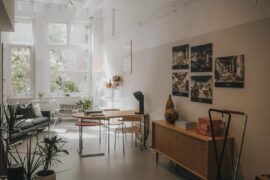
Sydney’s newest design concept store, HOW WE LIVE, explores the overlap between home and workplace – with a Surry Hills pop-up from Friday 28th November.
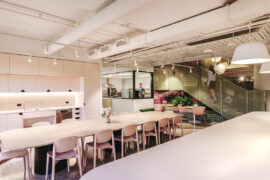
Gray Puksand’s adaptive reuse of former Melbourne office into Hester Hornbrook Academy’s new City Campus shows how architecture can support wellbeing, connection and community.
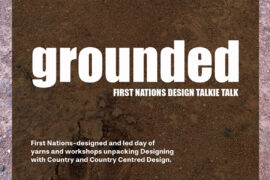
Several design groups are coming together on 29th October, 2025 for ‘grounded,’ a day of talks and workshops on Country-centred design.
The internet never sleeps! Here's the stuff you might have missed
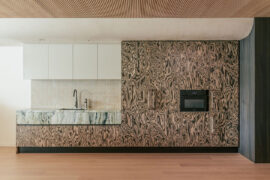
Trust sits at the core of Everton Buildings’ new office, where Ambit Curator was given licence to move beyond convention and deliver a workplace defined by vision, materiality and assured detail.

From the spark of an idea on the page to the launch of new pieces in a showroom is a journey every aspiring industrial and furnishing designer imagines making.

Indesign Media is aware of recent reports raising serious concerns about Australian architectural photographer Derek Swalwell.
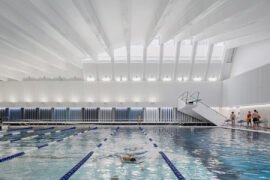
Hiwa, the University of Auckland’s six-storey recreation centre by Warren and Mahoney with MJMA Toronto and Haumi, has taken out Sport Architecture at the 2025 World Architecture Festival. A vertical village for wellbeing and connection, the project continues its run of global accolades as a new benchmark for campus life and student experience.